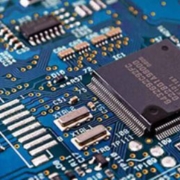Tariffs, Technology, and Office Productivity: A Looming Challenge
Imagine a busy office in Chicago where an IT manager opens a quote for new laptops and discovers the price has surged almost overnight. A recent wave of tariffs has driven up the cost of office technology, putting a strain on the company’s budget. Instead of rolling out faster computers and reliable new printers, the firm grapples with aging equipment and frustrated employees. This scenario is playing out in countless offices across the United States. Tariffs on technology, office supplies, and equipment are quietly eroding workplace productivity – but there are ways to fight back. In this article, we explore how rising import costs and supply hurdles translate to daily business challenges. We also look at real examples and data on the impact, and explain how managed print and IT services (offered by companies like Excel Office Services) can mitigate these risks with smart solutions.
Tariffs Drive Up Tech and Supply Costs
Businesses large and small are feeling the pinch as tariffs add to the price tag of essential office hardware and supplies. In early 2025, the U.S. enacted new tariffs that pushed the average effective tariff rate to 22.5% – the highest level since 1909. These duties affect a vast range of products, from high-end servers down to everyday office staples. The immediate result is simple: higher costs for equipment and supplies. For example, data center manufacturers facing tariff-related supply chain turmoil have started passing hikes in costs on to IT buyers. Government and industry analyses agree that these added costs don’t stay on the factory floor – they “will still probably be passed on to the end consumer”
meaning companies must pay more for the same devices and materials.
These rising prices are not just theoretical. Industry research by Forrester in 2025 indicates U.S. companies could see a 45% price increase on laptops and tablets due to the tariffs. One major reason is that many popular office electronics (from PCs to network gear) rely on components made in countries now subject to steep U.S. import taxes (some Chinese imports face tariffs as high as 34% under the new policy). Even products assembled elsewhere often include Chinese circuit boards or parts – and **if one part gets hit with a tariff, the entire device’s price is affected and typically goes up for the buyer. In short, offices are spending more on everything from printers to paper, squeezing already tight office budgets.
Delayed Upgrades and Slower Tech Adoption
When costs surge unexpectedly, something has to give. For many organizations, that means delaying technology upgrades and stretching the life of existing equipment beyond recommended cycles. In our Chicago office scenario, the IT manager reluctantly postpones a company-wide laptop refresh. This is not an isolated case – it’s a trend. Analysts observe that higher hardware prices are prompting companies to put off non-critical purchases and prioritize only the most essential IT projects. A Forrester report specifically notes that tariffs have come at an especially challenging time, colliding with the planned upgrade cycle for many PCs. With Windows 10 approaching end-of-service, many firms intended to replace old machines this year. Now, faced with sharply higher costs, businesses are choosing to delay Windows 11 upgrades and even paying for extended support on outdated systems rather than buying new hardware immediately
The consequences of deferred upgrades extend throughout an organization. New software rollouts get postponed because the current PCs might not handle them well. Promising innovations – from faster cloud services to advanced printing solutions – are put on the back burner. In some cases, firms explore stopgap measures: opting for “device as a service” leasing models or virtual desktop setups to avoid large upfront costs. These can help in the short term, but they are also affected by the tariffs (leasing companies face the same device costs and may raise fees accordingly). Ultimately, slowed adoption of modern technology means offices aren’t benefiting from efficiency gains that cutting-edge tools could provide. The latest collaboration platforms, security features, or energy-efficient printers can’t make a difference if they aren’t deployed on the office floor.
Maintenance Headaches and Employee Frustration
Running an office on aging technology is not just a budgeting exercise – it becomes a day-to-day maintenance challenge. Older printers and copiers require more frequent repairs, and finding replacement parts can become a saga of its own. Tariffs complicate this further by potentially slowing down the flow of imported spare parts and consumables. (For instance, a major IT distributor warned that tariffs could slow down the customs process for overseas products, leading to delays in procurement and repairs. When a printer is jammed and a critical component is stuck in transit or priced exorbitantly due to import fees, that printer stays out of service longer, disrupting workflows. IT teams find themselves firefighting – swapping out failing hard drives in decade-old PCs or coaxing another few months of life from a creaky network switch – because replacing them is either too costly or supply-constrained.
The human impact of these technical struggles is palpable. Employee frustration grows as the tools they rely on become less reliable and more sluggish. Consider a real-world example: a professional services firm that deferred upgrading its office PCs found that boot times and software crashes increased, leading to employees losing productive minutes (even hours) each week waiting on slow systems. Studies have shown that outdated technology and equipment downtime are major sources of stress in the workplace, often leaving staff feeling hamstrung by tools that can’t keep up. It’s not just an annoyance – it’s a productivity killer. Every minute spent waiting for a printer to reboot or retrying a video conference on an old laptop is time not spent on value-adding work. Over weeks and months, these cumulative delays add up to significant productivity loss across the organization. Morale can dip as well; employees take pride in their work, and consistently battling antiquated or malfunctioning equipment can make them feel undervalued or unable to perform their best.
The Hidden Toll on Office Productivity
All of these factors – soaring costs, deferred upgrades, maintenance roadblocks, and frustrated staff – converge to create a hidden toll on productivity. At a macro level, tariffs have nudged up inflation (2025’s tariff package alone is expected to raise overall U.S. consumer prices by about 2.3% in the short run. But it’s at the office level that the impact is most keenly felt day to day. A manager might notice that quarterly output is a bit lower than expected, or that projects are taking longer. One cause may be that employees are contending with more downtime and fewer tools. Rising prices can also shrink the budget for other productivity initiatives – money that might have gone into a new project management software subscription could be redirected to cover the higher cost of replacing a few broken laptops.
Real-world incidents illustrate this ripple effect. In 2024, some U.S. companies reported having to scale back IT rollouts and training programs because their hardware costs ballooned beyond what was budgeted. Likewise, a major tech company like Lenovo saw a significant rise in the cost of its products imported into the U.S. due to ongoing trade disputes. Those higher costs trickled down to businesses buying Lenovo’s equipment, forcing them to reconsider or reduce orders. Such cutbacks have a direct line to productivity: if a planned expansion of the office network is postponed, employees might struggle with network congestion on the old system; if a new batch of tablets for the sales team is canceled, those staff continue to grapple with older devices that run newer apps poorly. In essence, tariffs on office technology and supplies create friction at every level – strategic plans get altered and daily tasks get harder – quietly chipping away at efficiency and output.
Managed Services: A Lifeline Amid Trade Turbulence
Given these challenges, how can businesses maintain productivity and keep their teams equipped? Many are turning to managed print and IT services as a safety net. Managed service providers (MSPs) like Excel Office Services specialize in handling a company’s office technology needs holistically, and they are uniquely positioned to mitigate the risks we’ve outlined. Here’s how:
Cost Control and Predictable Budgeting: Managed services can help smooth out the cost volatility introduced by tariffs. Instead of facing large capital expenditures for new equipment at tariff-inflated prices, companies work with an MSP on a subscription or service contract basis. This often means a fixed monthly fee covering hardware, maintenance, and support. If the price of printers or toner spikes, the provider may have bulk purchasing agreements or alternative suppliers to cushion the impact. The business enjoys more predictable costs and can avoid some of the sticker shock of direct purchases. In effect, the rising device costs that collide with budgets are managed by experts who plan for these fluctuations.
Access to Up-to-Date Technology: Managed IT and print services keep a keen eye on the technology lifecycle. They can rotate in newer models as part of the service, ensuring the client isn’t stuck with obsolete equipment. For example, a managed print service might replace an aging multifunction printer with a newer, more efficient model as part of the agreement, rather than waiting for it to fail. Some providers offer “technology refresh” cycles built into the contract. This proactive approach means that even if a company held back on buying new hardware on its own, it can still get upgrades through the service. The result is that employees get to use current, faster technology sooner, without the company having to make large one-time investments when prices are high.
Maintenance and Downtime Reduction: A core benefit of managed services is professional maintenance and support that is always on hand. Rather than overburdening a small internal IT team with every printer jam and software glitch, businesses rely on the MSP’s dedicated technicians. These technicians often use remote monitoring tools to catch issues early – sometimes fixing problems before the client even notices. For instance, if a network switch shows signs of failure, the service team can replace it (sometimes under warranty or bulk service deals) promptly, tariffs or not. This rapid response minimizes downtime. Even when replacement parts are pricier or harder to get, a managed service provider likely has spare equipment or fast-track channels to keep the office running. By handling maintenance behind the scenes, MSPs free the internal staff to focus on core work, and they significantly cut the time employees spend waiting for fixes.
Expert Guidance and Strategic Planning: Managed service providers also act as advisors in turbulent times. Facing the uncertainty of tariff policies, businesses may not know whether to buy now or wait, how to configure their IT for resilience, or which investments will give the best bang for the buck under constrained budgets. Providers like Excel Office Services have experience across many clients and keep abreast of industry trends. They can guide companies to make informed decisions – for example, suggesting a shift to cloud services in lieu of buying new servers if hardware costs are prohibitive, or consolidating printing resources to fewer, more efficient devices to save on supply costs. Essentially, they help chart a course so that trade policy swings and supply hiccups cause as little disruption as possible to the company’s goals.
Productivity Through Resilience
Tariffs on technology, office supplies, and equipment have introduced a new layer of challenges for American businesses. From rising costs and delayed tech adoption to maintenance hassles and unhappy employees, the impact on office productivity is real and significant. These pressures, born from global trade policies, are largely outside any single company’s control. Yet, as we’ve seen, there are ways to respond decisively. Companies that recognize the risks can take proactive steps to safeguard their operations. By leveraging managed print and IT services, organizations large and small are finding a path to adapt and stay productive despite economic headwinds. They are converting unpredictable costs into steady plans, swapping aging gear for modern tools through service agreements, and keeping downtime to a minimum with expert support.
In the story of our Chicago office, the IT manager partnered with a managed services firm. The result? Her company avoided the worst of the tariff turbulence – employees received new laptops on schedule through a device-as-a-service program, the old printers were replaced with efficient models covered by a maintenance plan, and the CFO could breathe easier with a stable monthly IT expense. The office’s productivity not only held steady but improved, even as tariffs continued to shape the marketplace in the background. The lesson is clear: while tariffs and trade policies will continue to ebb and flow, businesses don’t have to ride the waves unprepared. With strategic planning and the right partnerships, like those offered by Excel Office Services and similar providers, companies can shield their productivity and thrive in the face of uncertainty.










